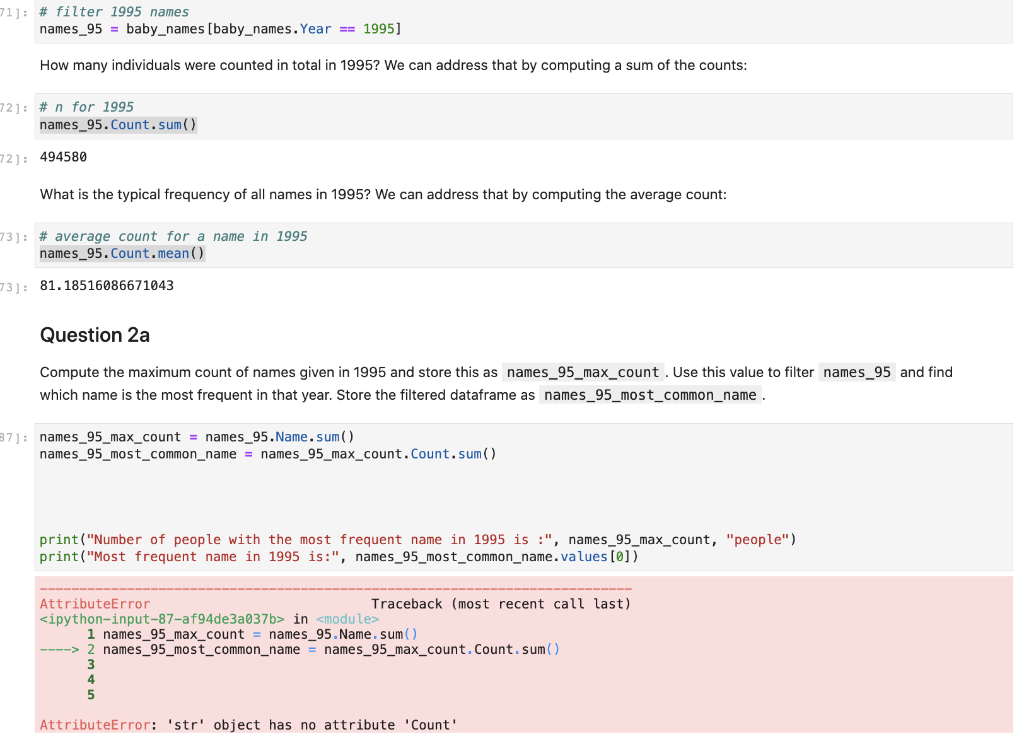Answered step by step
Verified Expert Solution
Question
1 Approved Answer
help!! using pandas/python will def upvote if its correct both 2a and 2b # filter 1995 names names_95 = baby_names[baby_names.Year == 1995] How many individuals
help!! using pandas/python will def upvote if its correct
both 2a and 2b


Step by Step Solution
There are 3 Steps involved in it
Step: 1

Get Instant Access to Expert-Tailored Solutions
See step-by-step solutions with expert insights and AI powered tools for academic success
Step: 2

Step: 3

Ace Your Homework with AI
Get the answers you need in no time with our AI-driven, step-by-step assistance
Get Started


